The online marketplace business model offers both buyers and sellers convenience and choice. This is also what makes it popular: by 2027, about 56% of retailers are estimated to switch to online marketplaces.
So, what to do to withstand the competition?
The answer lies in a robust marketplace strategy. This guide will serve as your blueprint for building a thriving platform, attracting loyal users, and achieving a sustainable competitive advantage.
Why Having a Marketplace Strategy Matters
A marketplace strategy is a comprehensive plan outlining how you’ll establish, operate, and grow your online marketplace business. It defines your approach to attract both buyers and merchants, also known as a “chicken and egg problem” ultimately fostering a vibrant online shopping ecosystem. This strategy acts as a roadmap, guiding key decisions and ensuring your platform achieves its full potential.
Marketplaces are indeed a popular business type and many thriving startups have counted on this model in the last decade. However, none of them just appeared on the market – they knew what they wanted to do and deliver, and their plan allowed them to later occupy a special niche.
A well-defined marketplace strategy is a sharp competitive edge, that can help you ride the wave. Here’s why:
Competitiveness
With 35% of all online purchases happening on marketplaces, there’s a vast landscape for shoppers to explore. This creates a crowded digital space where your products can easily get lost without a strategic approach. A well-crafted plan will increase your brand’s discoverability and help you stand out from the competition.
Customer Reach
Online stores can’t function without users much like any app. More so, it is important to keep the number of merchants and buyers balanced. If you decide to create a marketplace rather than a standalone website, it will help you attract more users and eventually build a proper ecosystem within the platform.
Making Data-Driven Decisions
Marketplaces offer a wealth of customer statistics. Having a strategy ensures you leverage this data effectively. You can analyze trends, identify customer preferences, and optimize your product listings and pricing strategies for maximum impact.
Optimizing Resources
A strategic approach helps you allocate resources wisely. You’ll understand that different types of marketplaces align best with different audiences and brand visions. Different revenue models allow you to focus your marketing efforts. Overall, it helps to avoid wasting time on platforms that don’t yield the desired results.
Building Sustainable Growth
A marketplace strategy is a long-term investment. It lays the foundation for sustainable growth by ensuring you attract the right customers, foster brand loyalty, and continuously adapt to evolving market trends.
How to Pick a Suitable Revenue Model For Your Marketplace
To ensure long-term success, your marketplace must be aligned with a suitable revenue model. There’s no magic formula, each business will need something different.
Here are the most popular choices to consider:
- Commission: This popular option takes a percentage of each transaction, ideal for marketplaces with high sales volume.


- Subscription: It offers premium features for sellers or buyers, generating recurring revenue.
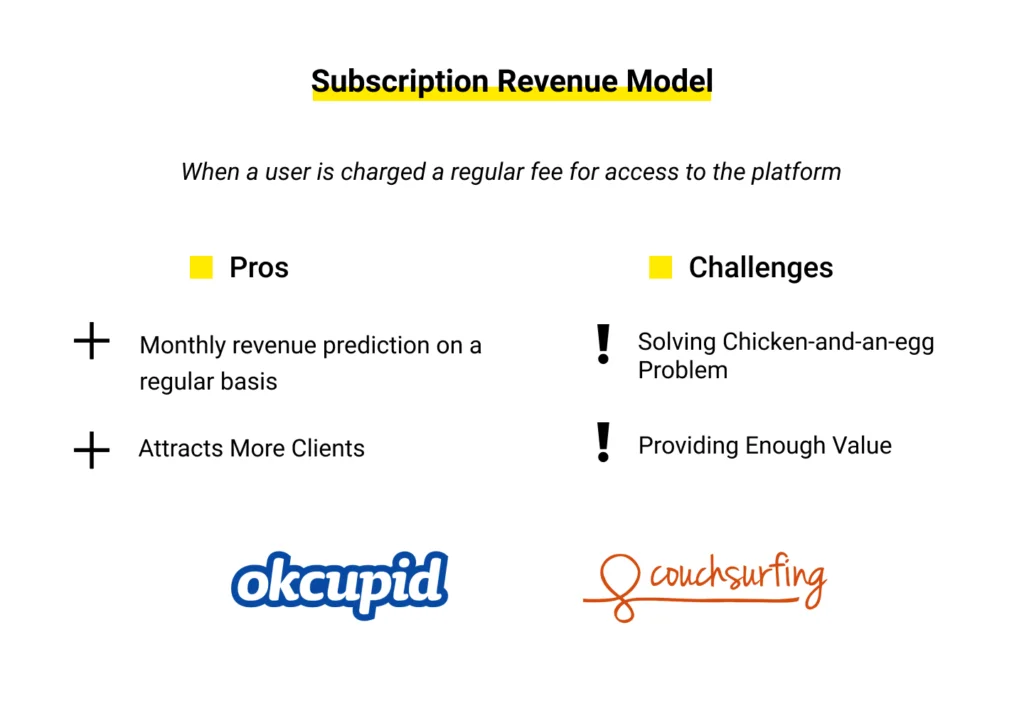

- Listing: Here, vendors pay a fixed cost to advertise their products, potentially working well for marketplaces with niche audiences or handcrafted goods.
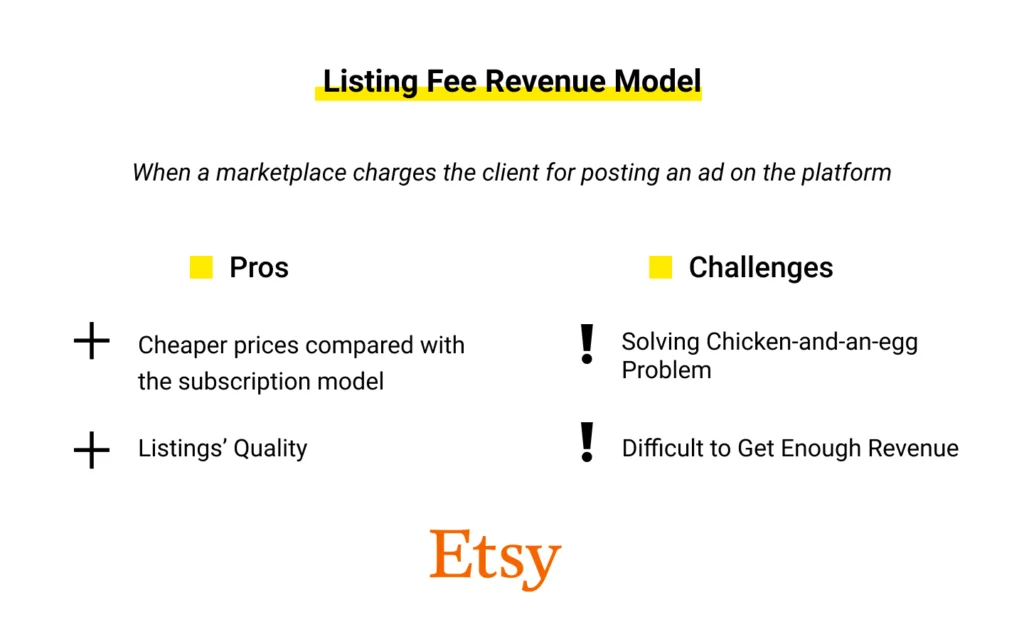

Ultimately, the best revenue model will complement your marketplace strategy, creating a mutually beneficial situation for both you and your users.
Which Selling Model to Choose For Your Marketplace
Beyond your overall strategy, a crucial decision involves choosing the right selling and fulfillment model for your marketplace. In this article, we navigate between three main options: 1P (first-party), 3P (third-party), and a hybrid approach.
First-Party vs. Third-Party Sales Models Comparison
In the first-party model, you, the marketplace owner, act as the seller, sourcing and holding inventory yourself. You control everything from product selection to fulfillment, ensuring brand consistency and quality control.
Pros:
- Higher profit margins: You capture the full retail price, minus fulfillment costs.
- Greater brand control: You curate the product selection and customer experience.
- Streamlined fulfillment: You manage the entire process, potentially offering faster delivery or unique packaging.
Cons:
- Higher upfront investment: You need capital to purchase and manage inventory.
- Limited product selection: Scaling your offerings can take time and effort.
- Increased operational complexity: Inventory management, logistics, and customer service become your responsibility.
Example: Patagonia is a well-known outdoor apparel and gear brand. They don’t just design and manufacture these products, but they also sell them directly to consumers through their own websites and physical stores.


This means they:
- Source and hold inventory: Patagonia manufactures its clothing and gear and stores it in its warehouses.
- Control product selection: They curate the selection of products offered on their web app and stores, ensuring everything aligns with their brand philosophy.
- Manage fulfillment: Patagonia takes care of packaging and shipping orders placed online or fulfilling them directly in their stores.
The 3P model allows independent sellers to list and sell products on your marketplace. You provide the platform and infrastructure, while merchants handle inventory, fulfillment, and customer service.
Pros:
- Wider product selection: Third-party sellers significantly expand your product offerings.
- Lower upfront costs: There’s no need to invest in inventory.
- Reduced operational complexity: Vendors handle most fulfillment tasks.
Cons:
- Lower profit margins: You typically earn commission fees per sale, leading to lower margins.
- Less control over brand and quality: Maintaining consistency across a vast seller base can be challenging.
- Limited control over fulfillment: Delivery times and customer service experiences can vary amongst sellers.
If you prioritize high-profit margins and brand control and have the capital, consider the 1P model. If a wider product selection and faster launch are your priorities, the 3P model might be ideal. Overall, 3P is more popular with it capturing the projected 59% of global sales. However, the choice still depends on your business goals.
Example: eBay is a prominent ecommerce platform where millions of independent vendors list and sell a vast array of products. They provide the platform and infrastructure for sellers to showcase their products, manage transactions, and communicate with buyers. However, eBay itself doesn’t hold any inventory or directly handle fulfillment.


- Independent sellers: Third-party sellers list and sell their products on the eBay platform.
- Infrastructure: eBay provides a digital platform for merchants to manage listings, process payments, and communicate with customers.
- Seller-handled operations: Each seller is responsible for sourcing, storing, packaging, and shipping their products, as well as handling customer service inquiries.
Need Help Choosing Marketplace Strategy?
Drop us a line
Hybrid Selling Model Approaches
A hybrid approach offers the best of both worlds. The business can act as a first-party seller for core products while also allowing third-party vendors to list additional items. This strategy can be particularly successful if you offer a niche product line and want to expand into complementary categories through third-party sellers. Also a great solution for those who want to test the market for new products before fully committing to a 1P model.
Ultimately, the best-selling and fulfillment model aligns with your overall marketplace strategy and long-term vision. By carefully considering your resources, target audience, and desired level of control, you can choose the approach that propels your marketplace toward success.
Example: Target sells its own brands and curated private label products (1P model) alongside established national brands from third-party vendors (3P model). This caters to budget-conscious shoppers seeking Target’s exclusive lines while also offering brand name variety.
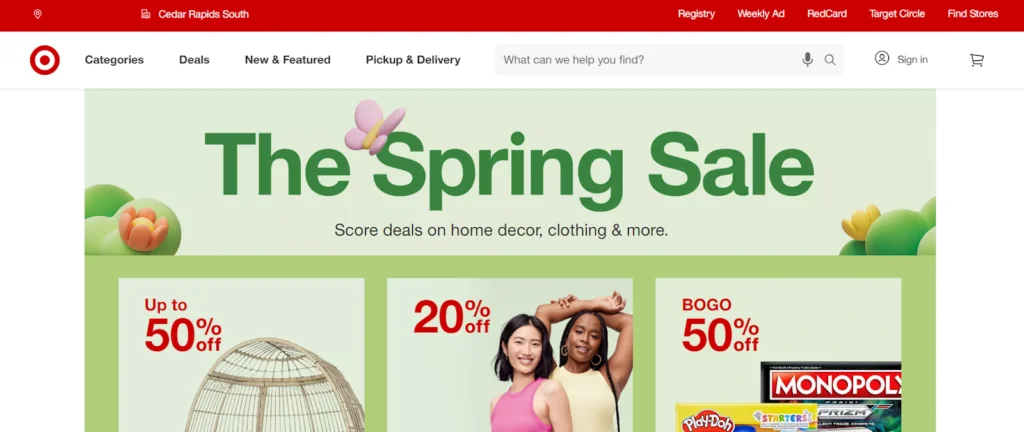

The hybrid approach is a great solution for those who want to test the market for new products before fully committing to a 1P model. For instance, a company specializing in athletic apparel (1P model) could introduce a line of fitness accessories through curated third-party merchants initially. This allows them to gauge consumer interest before investing heavily in manufacturing their accessories.
Marketplace Operations Optimization
Having a well-defined strategy and a revenue model that aligns with your vision is the foundation for a thriving marketplace. But to truly unlock its potential, you need to continuously optimize your day-to-day operations.
Marketplace Operations Optimization: A Multi-Faceted Approach
A multi-faceted approach refers to utilizing various strategies and tactics to achieve optimal results across different aspects of the platform. Imagine a high-performance race car. A well-designed engine and aerodynamic frame are crucial, but without ongoing maintenance and fine-tuning, the car won’t reach its full potential. The same principle applies to marketplaces.
For example, a multi-faceted approach can help your customer complete the sales cycle. The cart abandon rate in Europe now is averaging at 10%. A well-crafted approach to operations optimization will help streamline the sales cycle. However, to truly unlock its potential, you need to continuously optimize your day-to-day operations.
For service marketplaces, this type of approach can be beneficial since a multi-faceted approach can streamline the matching process. If your customer needs to hire a professional, you could utilize technological advancements such as AI and data analytics correspondingly with service listing. This would help tick all the boxes for your client, and they’d find the ideal service/professional they’ve been looking for.
Catalog Management Improvement
Think of a library without a proper cataloging system. Finding the right book would be a frustrating task. The same applies to your marketplace. Effective catalog management is essential for a seamless user experience. Here’s how to ensure your product listings shine:
- Ensure the accuracy of product and project information (descriptions, specifications, pricing).
- Invest in high-quality product images or provide detailed image guidelines for retailer.
- Craft compelling product descriptions highlighting features, benefits, and use cases.
- Organize the product catalog with a clear and intuitive categorization system.
- Regularly update product information, remove outdated listings, and adapt categorization to make an app more user-friendly.
Effective Order Management and Fulfillment Strategies
A smooth order fulfillment process is the cornerstone of customer satisfaction. You can try to implement streamlined order processing systems to minimize errors and delays. A good option is also to provide a variety of fulfillment methods (self-fulfillment, 3PL providers, in-house fulfillment for high-volume marketplaces).
Also, don’t forget to inform your customers about order confirmations. Around 64% of customers believe that confirmation emails are the most useful type of email. So, you should make them clear and concise, as well as be transparent regarding potential delays.
Payment Options and Transactions
Frictionless payment experiences are essential for reducing cart abandonment and boosting conversions. Look into integrating secure and user-friendly payment gateways with a variety of trusted payment methods. Minimize required fields and offer guest checkout options to streamline the checkout process. And, of course, communicate all pricing information upfront, including any additional fees or taxes.
Advanced Technology Integration
The world of technology and ecommerce is constantly evolving. Marketplaces can leverage these advancements to enhance user experience and operational efficiency.
- Leverage AI and machine learning for personalized recommendations, improved search accuracy, and automated tasks.
- Utilize blockchain to enhance security and transparency in transactions and product provenance. Recently, retail became one of the top spenders in the blockchain domain, occupying 6% of total spending.
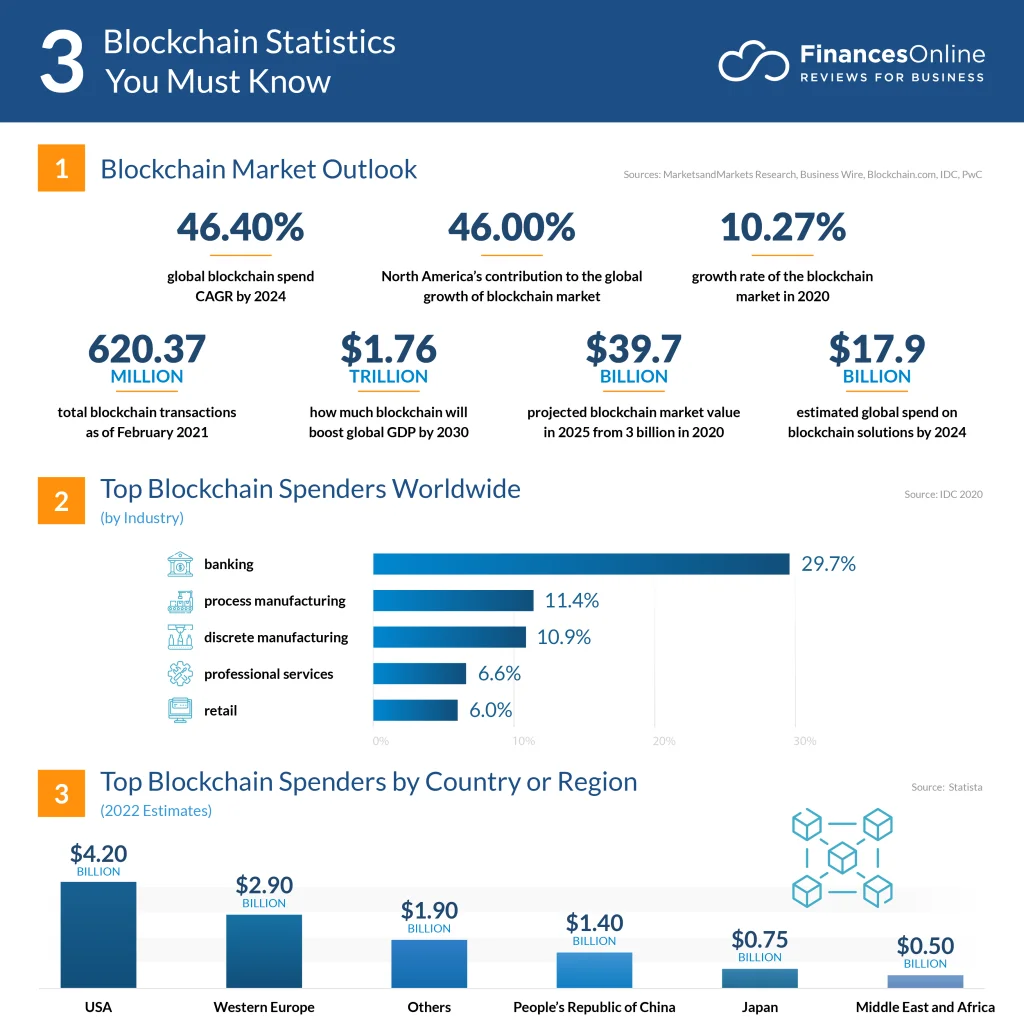

Source
- Consider augmented reality to allow virtual product experiences, potentially reducing return rates.
Selecting Fulfillment and Warehouse Partners
Choosing reliable fulfillment and warehouse partners is crucial for ensuring timely and efficient delivery. Look at the partners with adequate storage capacity to accommodate projected inventory levels and growth. Other tips include:
- Evaluate the geographical location of fulfillment centers for fast and cost-effective delivery.
- Prioritize partners with efficient order processing and fast shipping times.
- Negotiate competitive rates for storage, picking and packing, and shipping services.
- Select partners who share your commitment to excellent customer service.
Marketplace Marketing and Customer Acquisition
Beyond optimizing your marketplace operations, attracting and retaining customers is crucial for sustained growth. Here are key strategies to boost your marketing efforts and build a thriving community:
- Build a Strong Brand: Create engaging content that showcases your brand’s values and unique selling points.
- Cultivate Community: Foster meaningful interactions with customers through digital social media platforms.
- Run Targeted Ads: Utilize social media advertising to reach your target audience and drive traffic to your marketplace.
- Leverage Influencers: Collaborate with relevant influencers to promote your products and reach a wider audience.
Analyze Traffic Channels to Refine Strategy:
- Track Traffic Sources: Use analytics tools to identify the sources of traffic to your marketplace (organic search, social media, etc.).
- Evaluate Channel Performance: Analyze the conversion rates and customer lifetime value from each traffic source.
- Optimize Your Strategy: Adjust your marketing efforts to focus on the most effective channels and maximize your ROI.
Combine Most Successful Sales Channels:
- Multi-Channel Approach: Utilize a mix of marketing channels, including social media, email marketing, SEO, and influencer marketing.
- Tailor Your Strategy: Customize your marketing messages and content to match each channel’s unique audience and tone.
- Measure and Optimize: Continuously monitor the performance of each channel and adjust your strategy accordingly.
These strategies might help you build a strong online presence, attract new customers, and retain existing ones, driving long-term success for your marketplace.
How to Upscale Customer Engagement
A thriving marketplace hinges on fostering positive customer experiences. So, it becomes more and more important to find a way how to enhance user experience and drive engagement towards your product. In this segment, we focus on potential ways to do so.
Mobile-First Mentality
In today’s mobile-centric world, ensuring a seamless mobile experience is paramount as there are over 7.41 billion mobile users in the world.


Number of Mobile Users Online
Source
Your marketplace should adapt seamlessly to various screen sizes, load quickly on mobile devices, and boast an intuitive navigation interface for effortless product discovery and purchase completion.
Cultivating Positive Sentiment
Positive ratings and reviews are crucial for building trust and attracting new customers. Actively encourage user feedback through incentives like loyalty points or discounts. Prioritize exceptional customer service that addresses inquiries promptly and resolves issues effectively. Empower your team to go the extra mile, fostering positive interactions and brand loyalty.
Empowering Customer Advocacy
Turn satisfied customers into vocal brand advocates. Implement loyalty programs that reward repeat customers with exclusive perks. Incentivize existing customers to refer friends and family through attractive referral bonuses. Encourage customers to share their positive experiences and product recommendations on social media by hosting contests or user-generated content campaigns.
Choosing Your Niche
While fostering customer loyalty within your chosen niche is vital, careful consideration should be given to the niche itself. A focused approach offers several benefits:
- Targeted Marketing: A well-defined niche allows you to tailor your marketing efforts to a specific audience, maximizing your return on investment.
- Community Building: A niche marketplace fosters a stronger sense of community among like-minded buyers and sellers who share similar interests.
- Expertise and Brand Authority: Focusing on a specific niche allows you to develop deeper expertise. This way you can curate products better, provide insightful content, and establish your marketplace as a trusted resource within that niche.
You can create a marketplace that thrives on positive user interactions and a dedicated community. All you have to do is support and prioritize user experiences and catering to one niche.
Data-Driven Decisions: Collect and Analyze Data Analytics and Insights
The foundation of data-driven decision-making lies in gathering comprehensive statistics across various aspects of your marketplace. This includes:
- Customer Data: Track user demographics, purchase history, browsing behavior, and search queries to understand consumer preferences and buying patterns.
- Seller Data: Monitor seller performance metrics like product listings, fulfillment times, and user reviews to identify top performers and areas for improvement.
- Marketplace Performance Stats: Analyze key metrics such as traffic sources, conversion rates, and customer lifetime value to gauge overall marketplace health and identify growth opportunities.
Once you’ve established a robust data collection system, leverage powerful analytics tools to transform raw data into actionable insights. By translating data into actionable steps, you can support making informed decisions. This way you can enhance your marketplace’s appeal to your target audience, ultimately driving growth and profitability.
Marketplace Promotional Strategies and Hot Deals
Sparking customer interest and driving sales requires a strategic approach to promotions. This isn’t just about throwing random discounts at your audience. It’s about crafting a promotional strategy that leverages urgency and targeted incentives.
Implement the ‘Buy Box’ or ‘Lightning Deal’ Statuses
Many marketplaces provide prominent product placement options like “Buy Box” or “Lightning Deal” badges. These act like digital spotlights, significantly boosting a product’s visibility and encouraging impulse purchases. The statuses will attract customers to buy the products. It is possible to leverage the badges to drive sales by strategically using behavioral statistics and consumer insights. Shortly speaking, you prompt customers to choose products with high conversion rates. This way you support the businesses presented in the app and gain more profits.
Use Time-sensitive and Local Promotional Offers
Infuse your marketplace with excitement by incorporating time-sensitive and local promotional offers. Countdown timers on product pages and marketing materials visually emphasize the limited-time nature of these deals. This might trigger a sense of urgency and encourage users to buy on impulse.
Localize further by tailoring promotions to specific geographic regions. Target advertising and deals based on local events, holidays, or seasonal trends. Highlight local vendors and offer free or discounted local delivery for a limited time, especially for bulky or time-sensitive purchases. These tricks will help you support the businesses on your app.
Marketplace Global Expansion Strategies
The allure of a global marketplace is undeniable. Reaching new customers and expanding your reach can be a significant growth driver. However, successfully navigating the complexities of international expansion requires careful planning and a strategic approach.
- Gradual Expansion: Don’t try to conquer the world overnight. Start by identifying a few target markets with similar demographics or cultural nuances to your existing customer base. Try to test the waters, refine your approach, and build a solid foundation for further expansion.
- Local Payment Systems and Regulations: International payment landscapes are a labyrinth. Research and comply with local regulations for payment processing in each target market. Partner with reputable payment gateway providers who provide solutions tailored to specific regions. This ensures a smooth and secure checkout for your global customers.
- Understanding Shipping Preferences: Factors like distance, customs regulations, and local delivery infrastructure complicate international shipping. Offer a variety of shipping options with clear pricing and estimated delivery times. This will help you to cater to different consumer needs and budgets. Consider partnering with international logistics providers to ensure efficient and cost-effective delivery.
Marketplace Strategy Real-World Examples and Case Studies
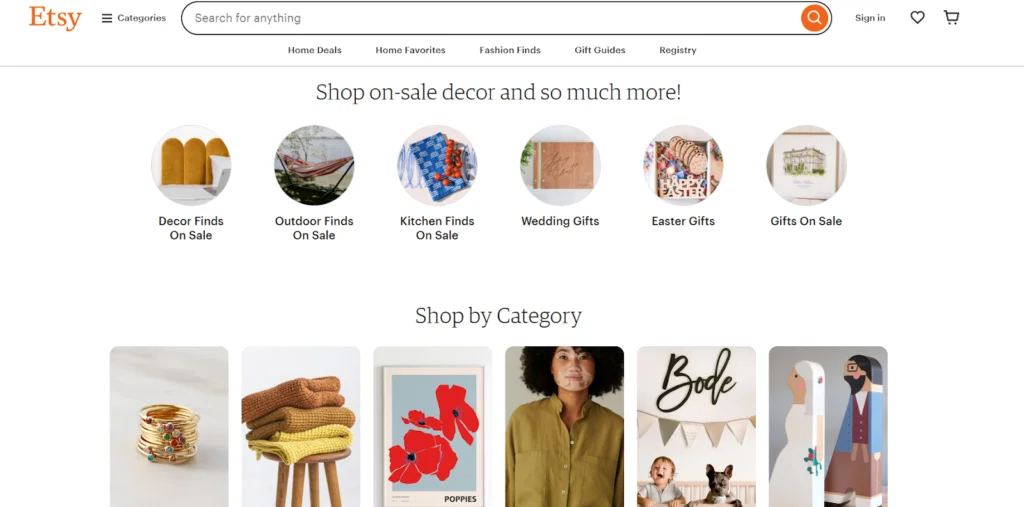

Etsy: This online marketplace for handmade and vintage goods exemplifies the power of niche focus. Etsy has fostered a thriving marketplace. This became possible because they focused on a passionate and global community of artisans and collectors. Now, it transcends geographical boundaries. Their success highlights the importance of fostering a strong community spirit. They know why providing a digital platform caters to specific customer preferences.
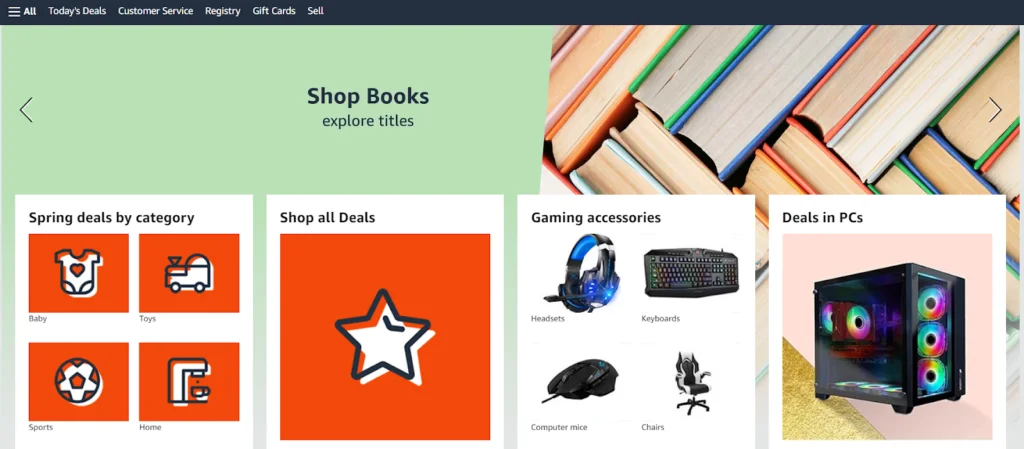

Amazon: A titan of the ecommerce industry. This marketlace is an example of adaptation and localization. They meticulously tailor their product offerings, marketing campaigns, and fulfillment options to individual countries. This allows ensuring a localized shopping experience that resonates with diverse customer bases. For Amazon, success underscores the importance of flexibility and adapting your marketplace model to the unique needs of each target market.
Sum it All
Building a thriving marketplace is a continuous journey. It needs a blend of strategic planning, operational excellence, and focus on your customers. In this guide, we’ve given you a roadmap that outlines key considerations to create a successful online ecosystem.
We have discussed the strategies, revenue models, ways to enhance customer experience, and many more. There are lots of mysteries in marketplace development ready to be unveiled further! However, now, you know why strategy is important and how to build one.